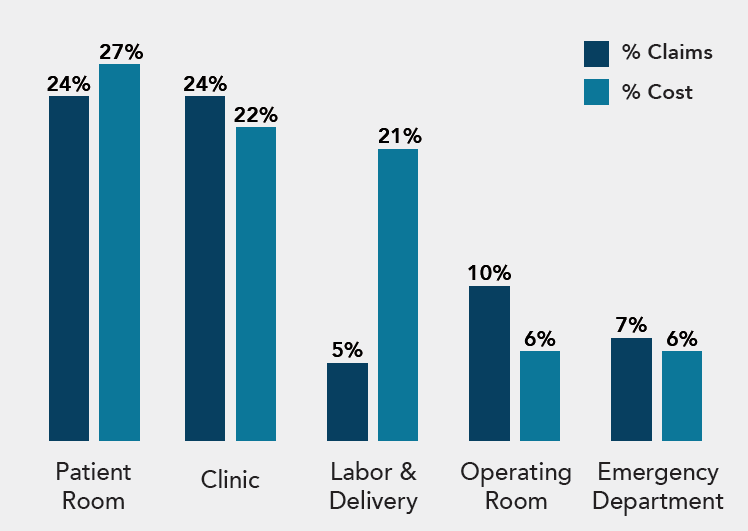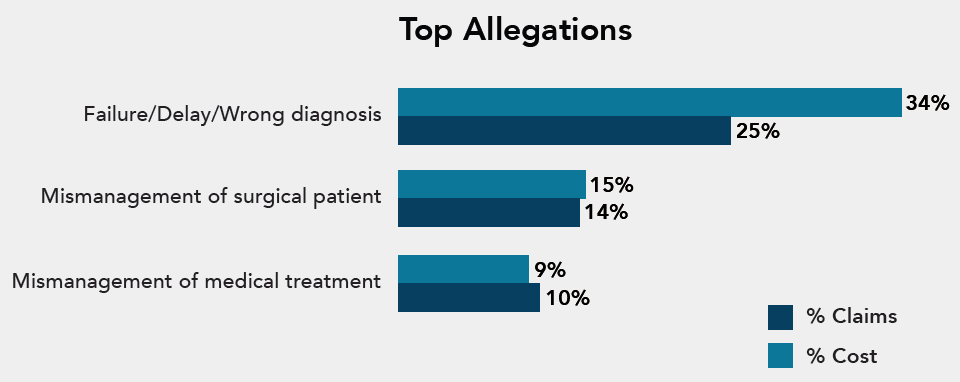How Improving Team Communication Reduces Harm
Breakdowns in communication cause harm
A 16-month delay in diagnosing colon cancer occurred when an office team member and physician failed to identify an abnormal pathology report following a colonoscopy on a 62-year-old woman because the information about the cancerous polyp was buried within the report. A letter sent to the patient erroneously identified the polyps as benign. The colon cancer advanced to Stage IV before the woman was finally diagnosed.
An analysis of Constellation medical malpractice claims shows that communication breakdowns are a contributing factor in 35% of harm events, accounting for 39% of costs, for a total of $223 million in costs over seven years.
“Understanding where, when and why these breakdowns occur is imperative to mitigating the risks to patients and residents in the future.”
Traci Poore, Senior Risk Consultant at Constellation

Communication breakdowns

Communication breakdowns can occur among the care team (physician, NP/PA, nurse, tech, CNA, lab, radiology) and/or with the patient, senior living resident and family. A single harm event may, and often does, involve multiple communication factors.
Top locations involved in team communication breakdowns

The patient room accounts for the highest rate of occurrence and costs when it comes to team communication breakdowns. The clinic setting accounts for the same percentage of claims, with slightly lower costs. While labor and delivery has a much lower percentage of claim occurrences, the costs associated with these claims are disproportionately higher.
Impact of team communication breakdowns
Breakdowns in communication are a leading driver of harm and frequently a contributory factor in malpractice claims involving failure to diagnose, delay in diagnosis or wrong diagnosis, along with mismanagement of surgical patients and mismanagement of medical treatments. As the claim example noted earlier, were it not for the unclear pathology report, the physician and patient may have known about her colon cancer diagnosis much earlier and been able to improve her chances of survival by starting treatment sooner.

Top contributing factors
Many factors lead to breakdowns in team communication. The most frequent is failure to communicate important information regarding the patient or resident’s condition, followed by failure to read the medical record. The information is there, but it is not being communicated across care teams, between shifts, or at vital handoffs or transitions in care.

How to improve team communication to reduce harm
Here are ways your organization can reduce communication breakdowns and improve methods of communication across all members of your team:
- Invest in team training and communication skills to improve communication at transitions of care/handoffs. Watch Constellation’s Communication on-demand webinars.
- Implement processes and tools to hardwire communication at transitions of care/handoffs using TeamSTEPPS, SBAR, and I-PASS.
- Assess your organization’s risk for communication breakdowns by taking one of our online risk assessments.
- Evaluate your culture of safety and the prevalence, context, and impact of behaviors on team communication using tools found in the HEAL Prepare Toolkit, Unit 1-Culture. Share these results across your organization and create an action plan for improvement.
- Make an organization-wide commitment to foster a culture and environment of professional, open communication that supports team collaboration.
Doing better after harm events: The HEAL Prepare Toolkit
Sign in to ConstellationMutual.com to access the HEAL Prepare Toolkit found in Risk Resources.
Constellation’s HEAL program provides healing benefits for care teams and their organizations because we truly believe that what’s good for care teams is good for business.
Constellation® and HEAL® are trademarks of Constellation, Inc.
Share this blog article:
Latest Blog Articles
Five Steps to Reduce Generative AI Risks in Healthcare
AI is already assisting physicians and healthcare organizations in many ways. Learn how its use may impact liability and what strategies can mitigate risk.
Five Steps to Reduce Obstetrical Errors and Malpractice Claims
Learn how to reduce obstetrical harm using evidence-based protocols for managing high-risk situations, joint team fetal monitoring education, and enhanced teamwork.
How to Reduce Surgical Harm and Malpractice Claims
In an analysis of our medical professional liability claims, surgical allegations are #1 in occurrence and #2 in cost. Learn how to reduce surgical malpractice risk.
